Have you ever wondered how certain websites seamlessly operate across various browsers? The key to much of this cross-browser compatibility lies in the Selenium framework.
This blog serves as your comprehensive resource for delving into Selenium Testing Tool, a potent tool that automates web application testing and enables you to create resilient software.
📌 Exploring Selenium Fundamentals: Acquire knowledge about fundamental commands for seamless interactions with web elements.
📌Understanding Robust Selenium Test Framework: Discover the essential components that constitute a robust Selenium test automation framework.
📌 Uncovering Selenium's Benefits: Learn how Selenium automation testing improves reliability and enables quicker test execution.
📌 Selecting Appropriate Selenium Frameworks: Delve into the crucial steps involved in selecting the appropriate framework in Selenium.
📌Choosing Suitable Selenium Frameworks: Gain insights into factors like scalability, maintenance, and flexibility for optimal testing results.
📌 Mastering Selenium Test Strategies: Obtain valuable insights and techniques to ensure that your Selenium tests remain efficient, scalable, and easy to maintain over time.
What is Selenium Testing Framework?
Selenium Framework is renowned for its compatibility with major preferred programming languages, browsers, and platform, making it an exceptionally versatile tool for testing web applications. Its wide array of customization options empowers developers with execution of tests according to specific requirements, while its seamless integration with various frameworks and dependencies boosts its capabilities.
How is Selenium used for testing?
▶️Say Goodbye to Tedious Clicks: Imagine a constant assistance who carefully navigates your application, logs in, completes forms, and precisely clicks buttons. That's the magic of Selenium scripts! You can automate complex user interactions, testing them efficiently and consistently without ever needing a coffee break.
▶️Ensuring a Flawless User Experience: Selenium automated testing helps verify functionality, ensuring web elements are displayed correctly and operate as intended.
This ensures your application behaves exactly as designed, delivering a seamless user experience for everyone.
▶️Regression Testing Made Easy (Finally!): Selenium test automation simplifies re-running tests after code changes, saving hours of repetitive work. Selenium automates this process, saving you hours of repetitive work with regression test runs.
▶️Cross-Browser Compatibility Without Headaches: Write test scripts once and execute them across various browsers—Chrome, Firefox, Safari, Edge—for thorough Selenium web testing.
▶️Data-Driven Testing on Steroids: Automation testing with Selenium enables testing with multiple data sets, crucial for applications like e-commerce. Selenium allows you to create test cases with various data sets, recurring test scenarios.
▶️Power Up Your Testing Framework: Selenium seamlessly integrates with popular testing frameworks like JUnit or TestNG. This lets you structure your tests effectively and manage them within a robust testing environment, keeping your testing process organized and efficient.
Basic commands for interacting with web elements using Selenium
Selenium offers an array of commands designed to engage with web elements seamlessly while navigating a web page. Below, we'll delve into some fundamental and widely utilized commands for interacting with web elements:
Finding Elements:
findElement(By.locator): This is the core method for finding elements on a webpage.

Interaction Commands:
.click(): Simulates clicking on an element.
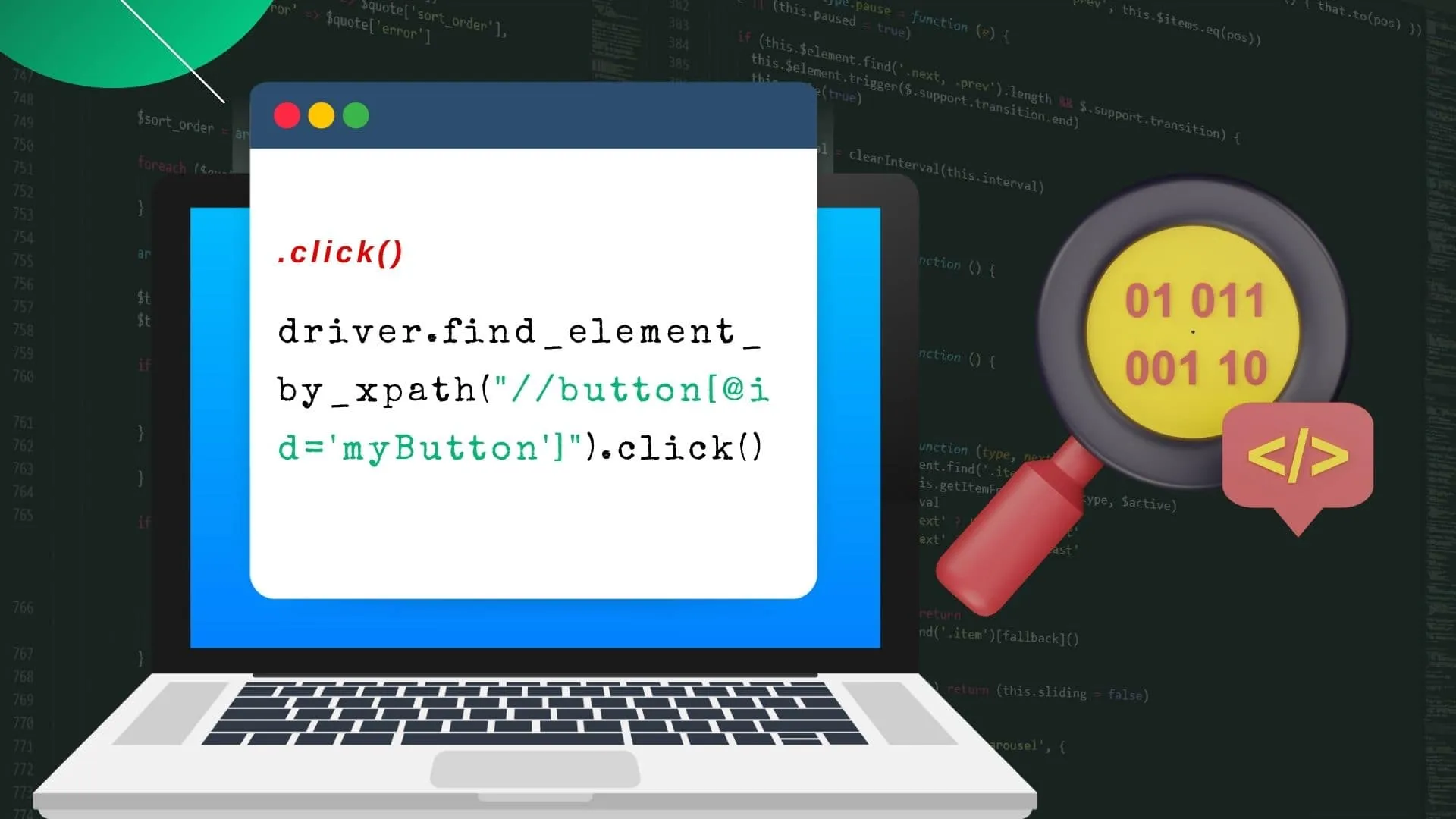
.sendKeys("text"): Enters the specified text into a text field or text area.

.clear(): Clears the text from a text field or text area.
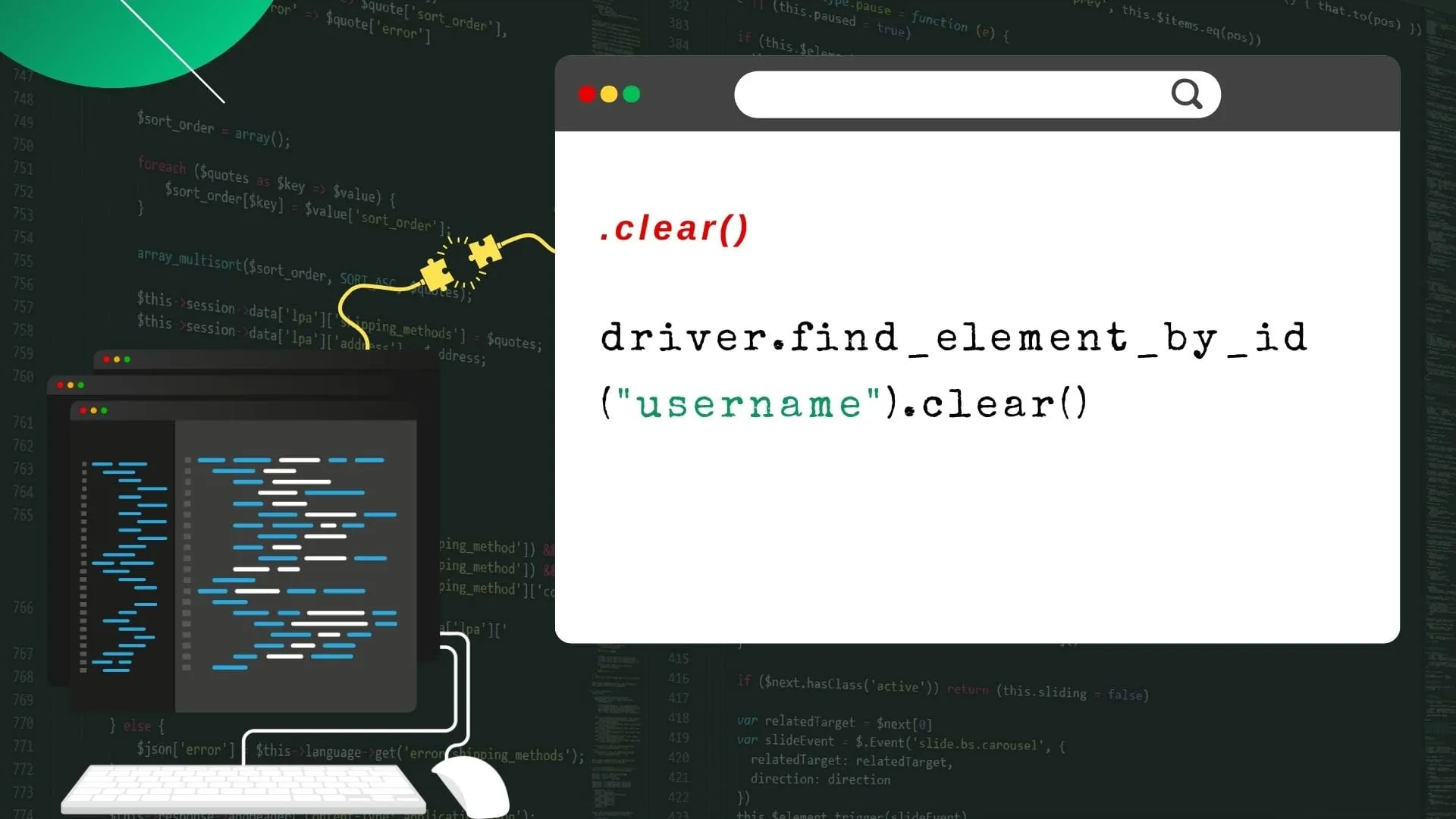
.submit(): Submits a form. This is typically used with form elements.

Verification Commands:
.isDisplayed() : Checks if the element is visible on the webpage.

.isEnabled() : Checks if the element is enabled for interaction.
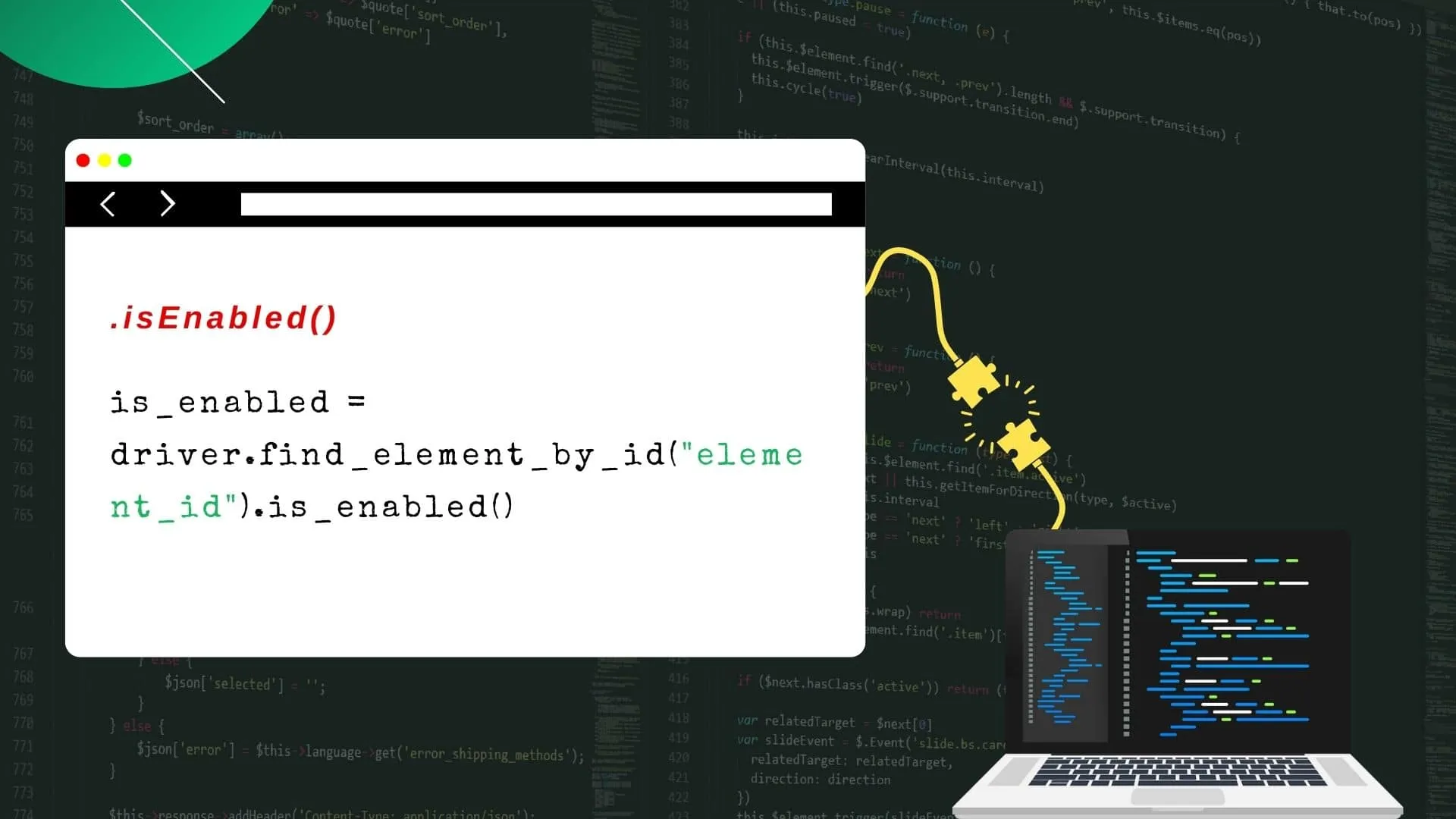
.isSelected() : Checks if an element like a checkbox or radio button is selected.
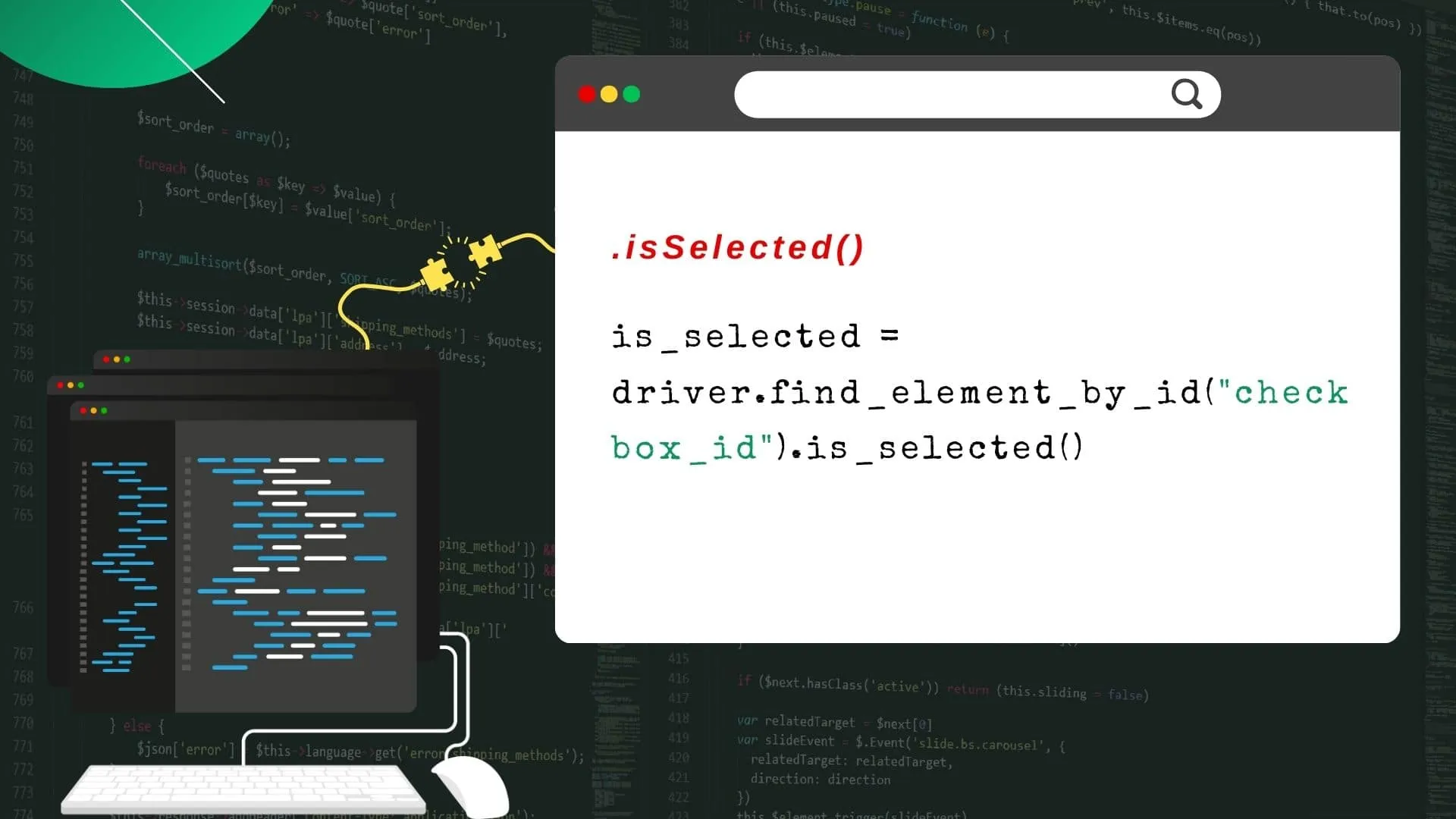
Getting Information:
.getText() : Retrieves the text content of an element.

.getAttribute(“attribute _name”) :Gets the value of a specific attribute of the element.
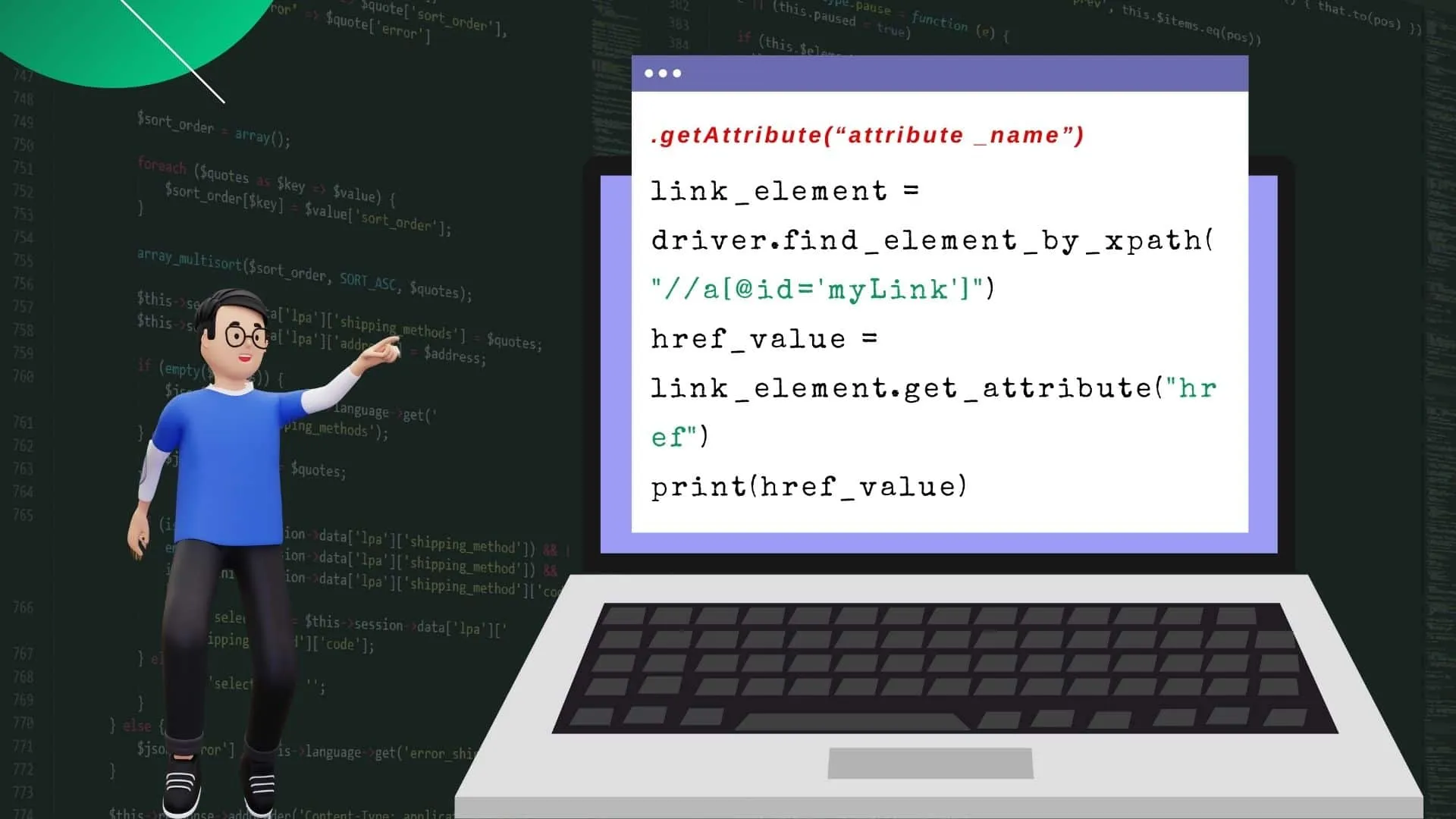
Key Components of a Selenium Test Framework
Selenium is a robust tool that allows you to manage web browsers programmatically. It functions well across different browsers and operating systems and supports scripting in various languages like Python, Java, and C#. For our purposes, we'll be using Python. Selenium comprises four core components that form the foundation of Selenium framework architecture: : Selenium IDE, Selenium RC, Selenium WebDriver, and Selenium Grid.

- Selenium IDE:
Selenium IDE, a simple testing tool Selenium for recording and playback of tests, a Firefox Add-On and Chrome Extension, is an Integrated Development Environment within the Selenium Suite. You can record, edit, and run Selenium tests using Selenese commands, making it ideal for both developers and software testers to automate web application interactions. While initially facing minimal maintenance, Selenium IDE has seen recent improvements and offers flexibility in creating and modifying test scripts.
- Selenium Remote control :
Selenium RC acts as a central server, allowing you to write automated web application tests in any programming language with the help of client libraries. While each test run needs a separate port, only one RC server instance is required for Java/PHP tests.
- Selenium Web Driver :
Unlike its Selenium RC, Selenium WebDriver interacts directly with browsers, eliminating the need for a separate server. It supports popular browsers and even offers headless testing with HtmlUnit. Additionally, WebDriver leverages native OS functionalities for smoother execution and avoids compatibility issues.Selenium Web Drive Directly interacts with browsers for smooth execution of Selenium tests.
- Selenium GRID :
Essentially, Selenium Grid is a central hub that manages multiple web browsers running on different machines. Its distributed testing power makes Selenium Grid a valuable tool for thorough and efficient web application testing. You can run your Selenium tests across these browsers in parallel, which reduces testing time and facilitates thorough cross-browser compatibility testing.
Advantages of using Selenium for Automation testing

In today's web development race, a flawless user experience is the winning ticket. Manual testing, though essential, can be slow and error-prone. That's where selenium software testing steps in - a powerful automation testing tool.
Here's what makes Selenium the go-to choice for testers:
- Open Source 🆓: Free of license costs, available to everybody.
- Flexibility of Language 🌐: Supports C#, Java, Python, and more.
- Cross-Browser Testing 🤝: Verifies interoperability between browser versions.
- Mobile Ready 📱: Testing goes beyond desktops and mobile applications. Automate tests on mobile devices as well.
- Simple Maintenance ⏱️: Saves time by adapting to changes in the software.
- Integrates with Everything 🧩: Functions nicely with testing instruments and frameworks.
- Community Support 🤝: Get available resources and assistance from a sizable community.
- Quick Testing 🚀: Accelerates the release process with a comprehensive automation testing Selenium platform.
- Lower Costs 💰: Provides the illusion of several users on a single computer.
- User-friendly test frameworks 🧑💻: Plentiful resources and suitable for beginners.
Choosing various Frameworks in Selenium is highly important
Choosing the right Selenium framework design is crucial for successful Selenium test automation. There are various frameworks available, each offering unique advantages that can significantly impact testing outcomes. Here are key reasons why selecting the appropriate Selenium framework matters:
- Structured Test Automation: Frameworks like TestNG and JUnit provide a structured approach with annotations and assertions, enhancing code organization and readability for easier test suite management.
- Modular Development: Frameworks like Page Object Model (POM) promote modular test development, improving code reusability and simplifying test maintenance.
- Efficient Test Execution: Selenium Grid, integrated with TestNG, enables faster execution across multiple browsers, reducing test execution time and enhancing testing efficiency.
- Data-Driven Testing: Frameworks like TestNG and Apache POI support data-driven testing, enhancing test coverage by running tests with different input data sets.
- Comprehensive Reporting: Frameworks like ExtentReports and TestNG provide detailed test execution reports, aiding in issue identification and team collaboration.
- Cross-Browser Compatibility: Selenium supports various browsers, and frameworks like TestNG with Selenium Grid facilitate seamless cross-browser testing, ensuring application compatibility.
- CI/CD Integration: Frameworks that integrate well with CI/CD pipelines such as Jenkins or GitLab CI/CD enable automated test execution, providing timely feedback on code changes for faster releases and continuous deployment.
Different Types of Testing Frameworks in Selenium
It might be difficult to choose the best framework among the many possibilities available. Let us examine the primary categories of Selenium frameworks to assist you in making a well-informed choice:
- Prebuilt Data-Driven Testing Framework: This type of testing framework allows tests to be run with different data sets stored outside by keeping test data and scripts apart. This division allows for simple data adjustments without requiring rewriting of the code, keeping the tests flexible and clear.
- Keyword-Driven Framework: Using action-based keywords, keyword-driven frameworks allow tests to be written in a legible manner for humans. Better cooperation is encouraged by this transparency, which improves communication between technical and non-technical teams.
- Hybrid Framework: Providing flexibility and adaptability, hybrid frameworks combine the advantages of data-driven and keyword-driven techniques. They enable a flexible testing approach that meets the needs of various testing situations and intricate project requirements.
How do we select the right types of Frameworks in Selenium?
Choosing the appropriate frameworks in Selenium requires taking into account a few crucial elements:
- Project Requirements: Recognize the testing requirements specific to your project, including cooperation, scalability, data variances, and complexity.
- Team Skills: Assess the proficiency of your group in several framework types, such as keyword-driven and data-driven methodologies.
- Test Objectives: To find the framework that best supports reaching your test objectives, clearly identify them. Define clear objectives for the Selenium test automation framework.
- Application Complexity: Select a framework that can manage your web application's complexity after taking it into consideration.
Community Support: Make sure the framework you select has a large and active community supporting it in case you need help, updates, or resources.

The different reporting frameworks used for Selenium tests
Reporting, which provides information on test execution and outcomes, is essential to Selenium test automation. To improve visibility and decision-making, let's examine some reporting formats frequently used with Selenium tests.
- TestNG Reports: TestNG Reports are structured HTML reports that show test grouping, status, and comprehensive test reports.
- ExtentReports: Comprehensive reporting that improves report readability with interactive HTML elements like test history, screenshots, and classification.
- Allure Framework: Multiple languages and frameworks are supported; user-friendly reports with comprehensive test procedures, attachments, and trend analysis are provided.
- ReportNG: ReportNG provides improved HTML reports with classification and statistics, using easily customizable themes for easy reading.
The best practices for writing maintainable and reliable Selenium tests
Creating accurate and reliable tests is essential to the success of test automation initiatives. Let's examine optimal methods to guarantee the stability, scalability, and maintainability of your Selenium tests.
- Utilize Page Object Model (POM):
To improve reusable test scripts and test maintenance, divide page elements and operations into reusable Page Objects.
- Keep Tests Focused:
To minimize complexity and facilitate upkeep and troubleshooting, write concise, targeted tests.
- Use Explicit Waits:
For dependable test execution, use explicit waits rather than implicit ones; WebDriverWait should only be used under certain circumstances.
- Manage Test Data:
To improve test coverage and maintainability, divide test data using external files or data sources.
- Employ Assertions:
To increase test reliability and validate anticipated results, provide meaningful assertions.
- Maintain Clean Code:
Stick to coding guidelines for cooperation and readability.
- Use Version Control:
Track changes and rollback when necessary by centralizing test code management through the use of version control.
Some open-source Selenium Tools
Selenium's versatility and wide range of features make it a popular option in software testing tools. We'll look at a number of open-source solutions in this blog article that improve test automation workflows and perform well with Selenium.
- TestNG : Robust Java testing framework TestNG works well with Selenium and provides sophisticated capabilities including parallel execution, configuration annotations, data-driven testing, and comprehensive reporting. TestNG is a popular test automation framework for Selenium tests because of its strong features.

- JUnit: Selenium tests for Java applications are one type of automated test that is written and run using JUnit, which is very popular in the Java community. It is a simple yet effective tool for Performance testing, offering annotations for test setup, teardown, and assertions.

- Apache Maven: Known for its build automation capabilities, Apache Maven simplifies Selenium test project administration by managing dependencies, code construction, and test execution. It also improves overall project organization by streamlining build operations.

- Apache POI : A Java package Apache POI makes it easier to read and write Microsoft Office files, especially Excel spreadsheets, which improves Selenium test automation. By easily transferring test data from Excel into Selenium tests, it enhances the potential of data-driven testing.

- Log4j: With its configurable logging settings, Log4j, a logging framework for Java applications, improves the structure and dependability of test logs in Selenium automation. Enhancing overall test reliability, it helps with problem localization, troubleshooting test failures, and test execution log monitoring.

- Jenkins: Popular open-source automation server Jenkins works well with Selenium and supports CI/CD pipelines. It provides test results, automates test execution, sets off tests in response to code changes, and improves teamwork. Jenkins improves test automation's scalability and reliability by streamlining testing procedures.

The common challenges faced when running Selenium tests

Addressing common Selenium test execution potential issues for efficient automation.
- Browser Compatibility: Compatibility problems may arise from different browser behaviors. Mitigated with automation testing tools Selenium like Selenium Grid.
- Element Locators: Difficulties with element location might arise in complex DOM frameworks.
- Test Data Management: It might be difficult to keep track of test data.
- Test Execution Speed: Productivity is impacted by slow test execution.
- Test Script Maintenance: Script maintenance might take a lot of time.
Different Languages Supported by the Selenium Test Framework
Selenium automation tests are popular and compatible with many programming languages and are used for online application testing.
- Java - 67%
- Python - 31%
- Ruby - 6.1%
- .NET - 17.6%
- JavaScript - 21.4%
- PHP - 1.5%
Limitations of Selenium Testing
Although Selenium is a powerful testing tool for web application, automation teams need to be aware of its limits. This article will list typical Selenium testing constraints and offer solutions for overcoming them.

- Limited Desktop Application Support
Mitigation: When using Selenium for desktop automation, combine it with specialist tools like AutoIt or WinAppDriver.
- Reporting and Test Management
Mitigation: Streamlined integration of selenium with ExtentReports/TestNG for robust test execution reports and CI/CD pipeline integration. - Dynamic Element Difficulties
Mitigation: For handling dynamic items, use explicit waits and reliable locators.
- Complexity of Cross-Browser Testing
Mitigation: Utilize Selenium Grid for cross-browser compatibility through regular updates and parallel testing.
CAPTCHA, OTP, and Pop-up Handling
Mitigation: Explore specialized services or external platforms for automated testing component management.
Wrapping it Up!
This blog has covered Selenium testing, an essential open-source tool, is like the superhero of software testing, helping teams automate boring tasks and ensure app quality. It uses language bindings and cool components like Selenium WebDriver and Selenium Grid for smooth testing across different browsers and data-driven awesomeness.
The future of Selenium testing looks super bright with cool upgrades and links to outside aspects like CI/CD pipelines and reporting tools. Plus, it's getting even better with hybrid-driven magic and language-specific tricks, making it super flexible for different testing needs.
The Selenium framework example demonstrates its versatility and power in automation testing using Selenium. From supporting multiple programming languages to enabling robust test execution, Selenium is the cornerstone of modern software testing. Embrace this tool and elevate your testing processes to new heights.
People Also ask
👉🏻How does Selenium WebDriver differ from Selenium IDE?
Selenium WebDriver: Flexible, programmable test creation.
Selenium IDE: Simple, record-and-playback test automation.
👉🏻Why use the Selenium Framework for automated browser testing?
Selenium's open-source, cross-browser, and support over a range of programming languages make it a potent and economical tool for web browser automation.
👉🏻Which programming languages are supported by Selenium WebDriver?
Selenium WebDriver, primarily in Java, supports multiple languages like Python, C#, Ruby, etc.
👉🏻Is selenium a tool or framework?
Selenium is an open-source suite of tools including WebDriver for browser interaction, enhancing web app testing when combined with testing frameworks.
👉🏻What are Page Object Model (POM) design patterns and how do they benefit Selenium tests?
The Page Object Model (POM) organizes web UI elements into separate classes per page, enhancing Selenium test maintenance and reusability by reducing code duplication and easing updates for UI changes.





%201.webp)

